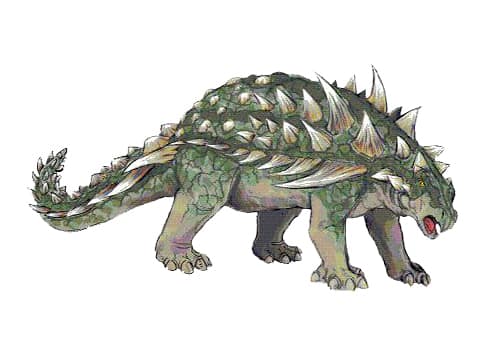Gastonia


Name: Gastonia
Pronounced: Gas-toe-nee-ah 
Meaning: Gaston's thing
Type: Armoured Dinosaur
Length: 5 meters long
Diet: Herbivore
Period: Early Cretaceous
Years: 142-127 million years ago
Location: USA
Description: Gastonia is a genus of herbivorous dinosaur that lived during the Early Cretaceous Period, about 130-125 million years ago. It was a member of the group of dinosaurs called the ankylosaurids, which are characterized by their heavily armored bodies and small, beaked heads. Gastonia was a small to medium-sized dinosaur, with an estimated length of about 8-13 feet and a weight of up to 1-2 tons. It had a small head with a pair of large, forward-facing eyes, and a beak with small, sharp teeth, which it likely used for biting and grinding plants. It had a heavily armored body, with rows of bony plates and spines covering its back, sides, and tail. It had short, stocky legs with four toes, and short, powerful arms with three fingers, which ended in small, hoof-like claws. Gastonia is known from several well-preserved fossil specimens, which include partial skeletons and complete skulls. It was discovered in Utah, United States, and is named after the Gaston Formation, where the fossil was found. Gastonia is considered a basal member of the ankylosaurid group, and is thought to be closely related to other early members of this group such as Euoplocephalus and Scolosaurus. Gastonia is important because it is one of the few known dinosaurs from the Early Cretaceous Period, and helps to shed light on the diversity of dinosaurs during this time. It is also significant because it is one of the few known dinosaurs from the western United States, and helps to fill in gaps in our understanding of the distribution and habitats of dinosaurs in this region. Gastonia is also important because it is one of the few known ankylosaurids, and helps to shed light on the evolution and diversity of this group of dinosaurs.
Loading images from Wikipedia
Loading a Random Dinosaur...


